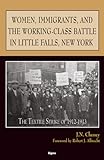
The overturning of Roe v. Wade was the result of decades of relentless effort and strategic maneuvering by a determined religious and right wing coalition, and, the underestimation of the power of this movement by the liberal establishment. Recency bias puts Donald Trump and his appointments to the U.S. Supreme Court at the forefront of those responsible for taking down Roe v. Wade. However, reality is far more complex, with roots of the right’s organizing stretching back to the immediate aftermath of the Supreme Court’s 1973 ruling guaranteeing a constitutional right to abortion.
This landmark decision sparked one of the most enduring and contentious religious and political movements in American history, involving national and local anti-abortion organizations, violence-prone activists that didn’t stop at the murder of abortion providers and the bombing of health clinics, Religious Right leaders, conservative legal organizations, the Republican Party, and a coterie of deep-pocketed right-wing funders and foundations.
In their new book The Fall of Roe: The Rise of a New America, Elizabeth Dias and Lisa Lerner write: “For more than 40 years a passionate band of conservative and mostly Christian activists tried to find ways to undermine [Roe v. Wade]. … But they had been losing.” However, despite the losses the movement was marked by conviction and a perseverance that led to countless legal battles, demonstrations, vilification and attacks on abortion providers, political campaigns, and grassroots mobilizations, all aimed at overturning Roe.
“The Fall of Roe unfolds like a horror story,” New York magazine’s Sarah Jones recently noted. “Danger lurked outside the cabin door, but the threat was never fully perceived by those who lived within. Dias and Lerer depict a liberal Establishment that behaved as though it had permanently won. ‘Roe loomed so large in American life that it was almost impossible to imagine that it could disappear,’ they write. ‘Every election Democrats and their allies in the abortion rights movement warned voters about the potential consequences to abortion rights, should they vote Republican,’ but they didn’t really believe that Roe would one day fall.
“Yet as institutions like Planned Parenthood grew flush with cash, activists closer to the ground and who were more exposed to danger warned of trouble. A constellation of ‘smaller, largely Black and Hispanic abortion-rights organizations’ knew that restrictions had already eroded the right to abortion. Though the big abortion-rights groups considered the Affordable Care Act a major success, the law reaffirmed the Hyde Amendment, which banned federal funding for abortion care and mostly affected poor women.”
In the early years, conservative activists faced an uphill battle. The 1973 ruling was seen as a settled issue, and early attempts to challenge it in court and through legislation were met with failure. Yet, this did not deter them. They understood that to achieve their goal, they needed to play the long game, embedding their cause within the fabric of American politics and culture. Reproductive rights became one of the right’s foremost culture war issues.
Throughout the late 20th century, anti-abortion activists formed alliances with influential religious leaders, who began to preach the sanctity of life from their pulpits, galvanizing their congregations. Local and national organizations, such as the National Right to Life Committee, Susan B. Anthony Pro-Life America, and Operation Rescue, organized protests and lobbying efforts, ensuring that the issue remained in the public eye and on the political agenda.
Conservative legal organizations, such as the Alliance Defending Freedom, Liberty Counsel, the Thomas More Society, and the Federalist Society, played a crucial role in this effort. They worked tirelessly to promote a judicial philosophy that favored a narrow interpretation of the Constitution, which they believed could lead to the overturning of Roe. This involved meticulously vetting and supporting judicial candidates who shared their views, to ensure that when the opportunity arose, they would have allies on the bench.
The Republican Party also became a key player in this movement. Starting in the 1980s, the party increasingly adopted anti-abortion stances as part of its platform, recognizing the issue’s power to mobilize a small yet highly motivated portion of the electorate. Republican presidents, from Ronald Reagan to George W. Bush, appointed conservative judges who were sympathetic to the anti-abortion cause, slowly shifting the balance of the judiciary.
Right-wing funders and foundations provided the financial backing necessary to sustain this long-term effort. Wealthy donors and organizations, such as the Koch brothers and the Heritage Foundation, funded advocacy groups, think tanks, and political campaigns, ensuring that the anti-abortion movement had the resources it needed to continue its fight.
For decades, these efforts seemed to be in vain. The courts upheld Roe, and public opinion largely supported – and still does — a woman’s right to choose. But then, along came Donald Trump. His promise to name “pro-life judges” during his 2016 presidential campaign was the opening the anti-abortion movement had been waiting for. With Trump in the White House, the movement saw its chance to finally achieve its goal.
Trump’s presidency marked a turning point. He appointed three Supreme Court justices—Neil Gorsuch, Brett Kavanaugh, and Amy Coney Barrett—who were seen as likely to overturn Roe. These appointments shifted the balance of the Court, creating a solid conservative majority.
In June 2022, the Supreme Court handed down its decision in Dobbs v. Jackson Women’s Health Organization, effectively overturning Roe v. Wade. The ruling was the culmination of nearly 50 years of relentless effort by the anti-abortion movement, a testament to their persistence and strategic acumen.
The fall of Roe has awakened reproductive rights advocates and is ushering in a new era in American politics and society. As Elizabeth Dias and Lisa Lerner detail in their book, this victory for the anti-abortion movement is not just a legal milestone but a transformative moment that will shape the future of the country. The rise of this new America, forged through decades of struggle and sacrifice, is a story of how deeply held beliefs and determined activism can eventually reshape the landscape of a nation.
There is no question that the anti abortion movement will continue campaigning to outlaw abortion in all fifty states. And now, in the flush of victory right wing coalitions are seeking to broaden the attack on abortion to attacking the right to contraception. The upcoming presidential election will go a long way to seeing whether that scenario prevails.
Whether the American people will allow that to happen remains to be seen. According to the Pew Research Center, support for abortion access has remained steady, with 63% of the population favoring access in almost all cases.
And, women and their allies are fighting back. According to Ballotpedia, “In 2022, there were six ballot measures addressing abortion — the most on record for a single year. Measures were approved in California, Michigan and Vermont. Measures were defeated (that would have eliminated abortions) in Kansas, Kentucky and Montana. ” In 2023, Ohio passed a constitutional amendment establishing the right to abortion. There will be a ballot initiative in Florida in 2024 election to establish abortion rights following State’s recent highly restrictive anti-abortion legislation.
The anti-abortion movement’s playing the long game has redefined America’s political landscape. Now, the question remains, whether reproductive rights advocates and activists can sustain and build upon its recent victories. If pro-choice organizations and activists have learned anything from this 50-plus year battle, it is that fundamental rights cannot be taken for granted.










